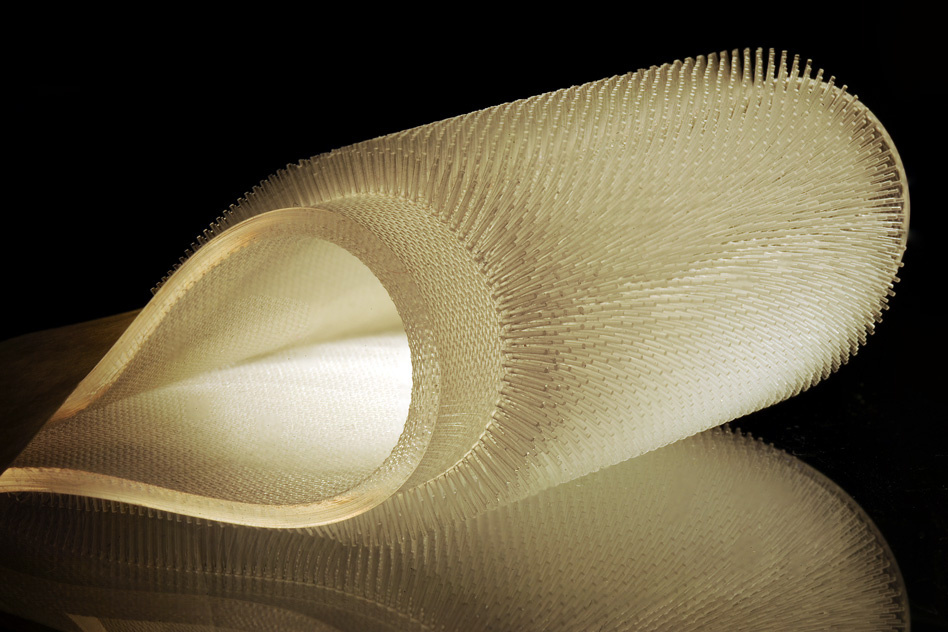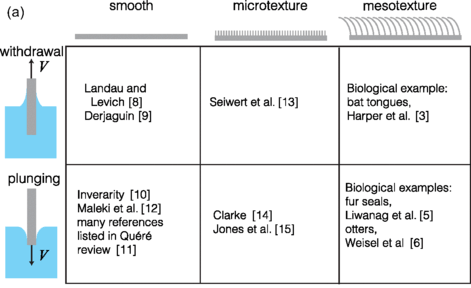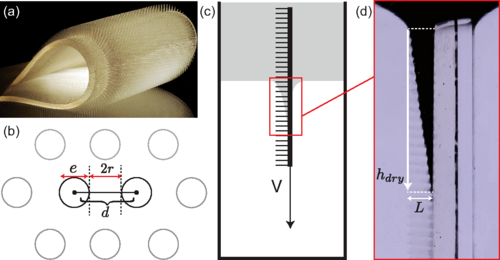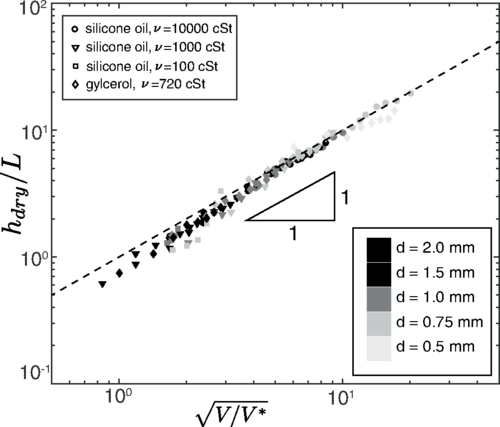Fur beaver as a sample wetsuit

Common beaver
Beavers and sea otters (sea otters) lack a thick layer of fat that retains heat in walruses and whales. However, small semi-aquatic rodents manage to stay warm and even dry when diving under water. Scientists are very interested in the structure of the fur skins of beavers. It may be possible to construct the same hydrophobic material by artificial means.
The hydrophobic characteristics of beaver fur and body heat insulation are due to the fact that pockets of warm air are formed in the beavers' fur. They work as an insulator.
Massachusetts Institute of Technology engineers took such a structure as a model - and made fur-like elastic pelts from artificial material . With their help, they learned what physical processes occur when air bubbles get stuck between individual hairs in the hair and the material sinks into the liquid.
')

The research findings were published on July 29, 2016 in the journal Physical Review Fluids (doi: 10.1103 / PhysRevFluids.1.033905).
“We are especially interested in wetsuits for swimming, where athletes alternately move their limbs in different environments — air and water,” said Anette (Peko) Hosoi, a professor of mechanical engineering and the dean of the relevant department at MIT. - We can control the length of the hairs, the distance between them and the interposition. This allows textures to be optimally matched to a specific swimmer’s speed, with a maximum dry tissue area. ” Colleagues from her department, as well as specialists from related disciplines, including the MIT instructor in applied mathematics, helped the professor to prepare the scientific work.
This example shows that for many engineering problems, humanity can find patterns of effective solutions in nature. In this case, the task was to find the biological equivalent of swimsuits for swimming, so that the fabric dries out as soon as possible after being removed from the water, but at the same time retains thermostatic properties, that is, provides the swimmer with heat under water.
The question turned to biologists. And they advised to seek a solution in semi-aquatic animals such as the beaver.
When engineers began to study the topic, they found out that animals actually have two types of wool: 1) long outer protective coat and 2) short, dense undercoat. Scientists assume that the first wool protects the second from the ingress of water, but so far there has not been a clear scientific understanding and model of how this process occurs. The table lists previous scientific work on the study of different types of wool in semi-aquatic animals.

For this, a group of researchers from MIT and designed an artificial elastic material. On acrylic molds, holes were burned under the control of a computer program using a predetermined pattern, with exact observance of the distance between the holes. A mold from polydimethylsiloxane, a soft rubber-like material, was then placed in the mold. He took the desired form under pressure and temperature.
The illustration shows the characteristics of this material, where the wool particles are located in the hexagonal structure, and the distance between the hairs is equal to their diameter. The material was immersed in liquids at different speeds using special motorized installations. The diagram below shows the results of the experiment when the material is immersed in a liquid at a speed of 5 mm / s. Air pockets are shown in black.

The material was immersed in water at different speeds and the experiments were recorded on video.
As it turned out, when immersed in a fluid between the individual strands, peculiar capillary plugs with air are formed. Water can penetrate only to a certain depth.
Experimentally, the ratio of the dry area of the hairs to the total length of the hairs was studied, depending on the density of the liquid, the rate of immersion and the distance between the hairs in the artificial analogue of the beaver hair.

The experiment showed that the layer of air in the undercoat becomes thinner with increasing depth of immersion and decrease in the rate of immersion. In addition, the thickness of the air layer depends on the thickness of the hair. From a physical point of view, fluid pressure pushes air bubbles out of the hair “trap,” but the viscosity and density of the fluid restrain their movement.
It was very important how the hairs are arranged relative to each other. Scientists managed to make a mathematical model that describes the properties of the material depending on its structure. Thus, it is possible to choose the optimal length of hairs, thickness of hairs and the distance between them depending on the density of the liquid and the speed of body movement.
Knowing the formula, now we can clearly say, looking at a sample of wool, it will keep the air or not - in what kind of fluid and at what speed.
The authors of the scientific work believe that their research can be applied not only in the development of more effective wetsuits, but also in other areas of materials science. For example, in calculating the most effective characteristics of protective coatings. In the process of applying such coatings, the material is immersed in a liquid. Now you can calculate whether air bubbles remain under the liquid. And with what speed it is necessary to immerse the material in the bath to get rid of air bubbles.
Source: https://habr.com/ru/post/398111/
All Articles